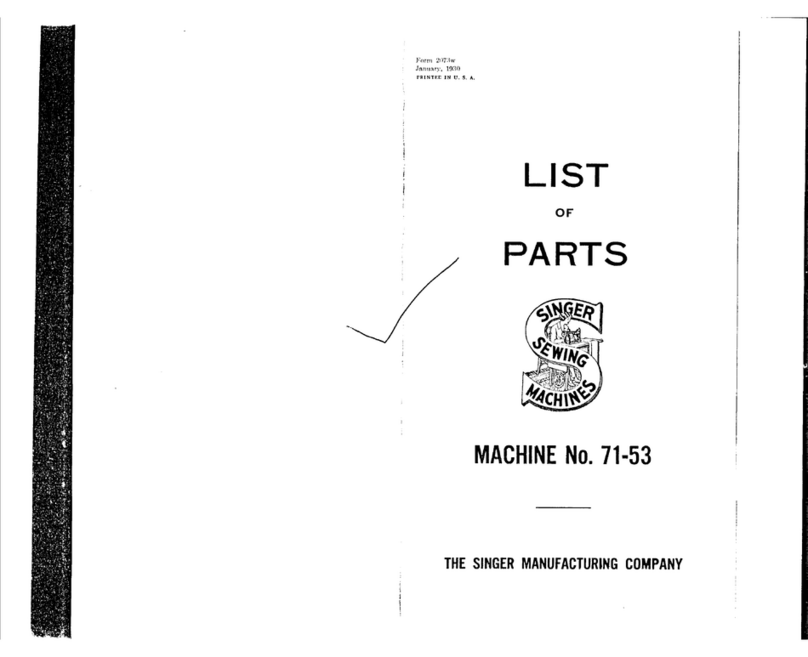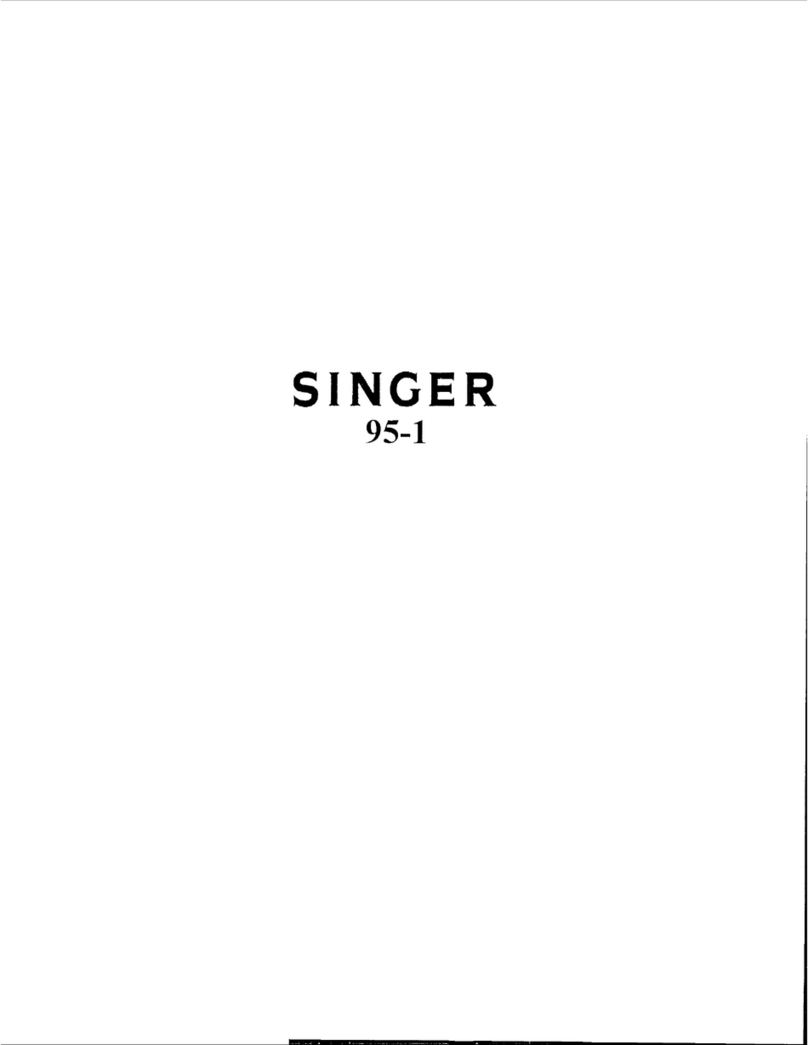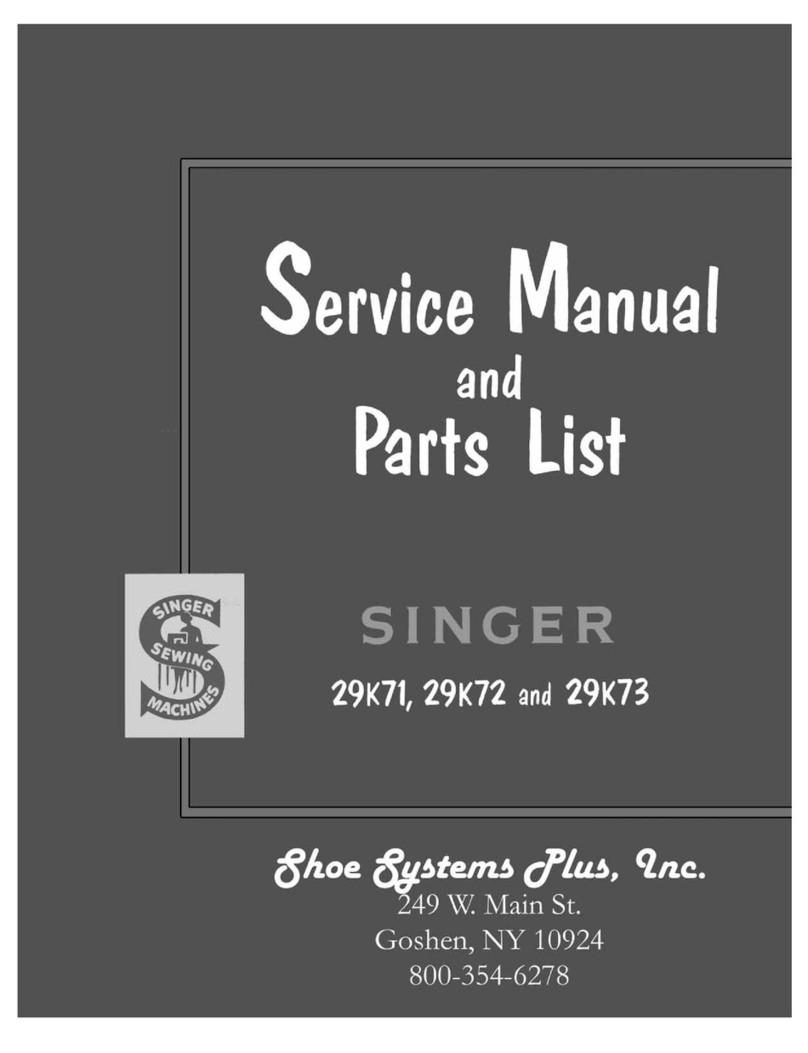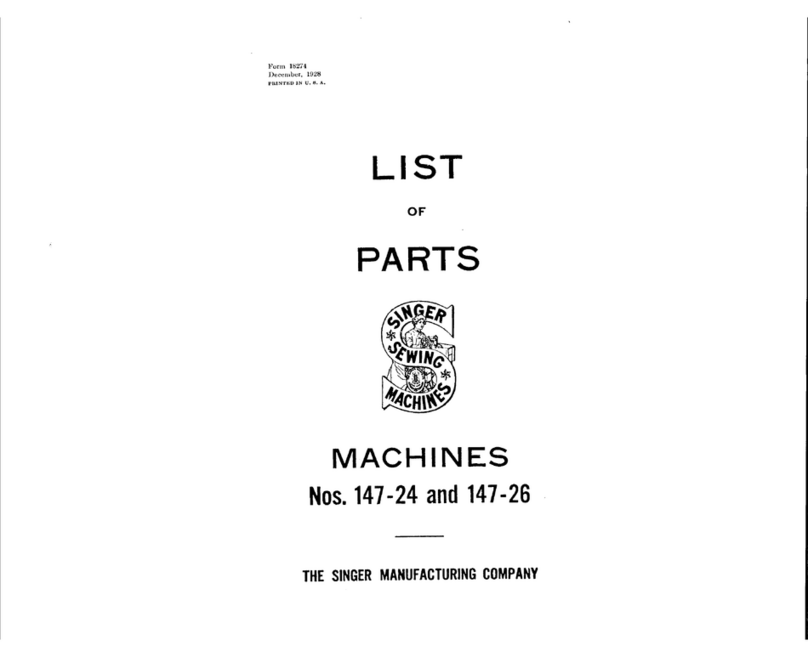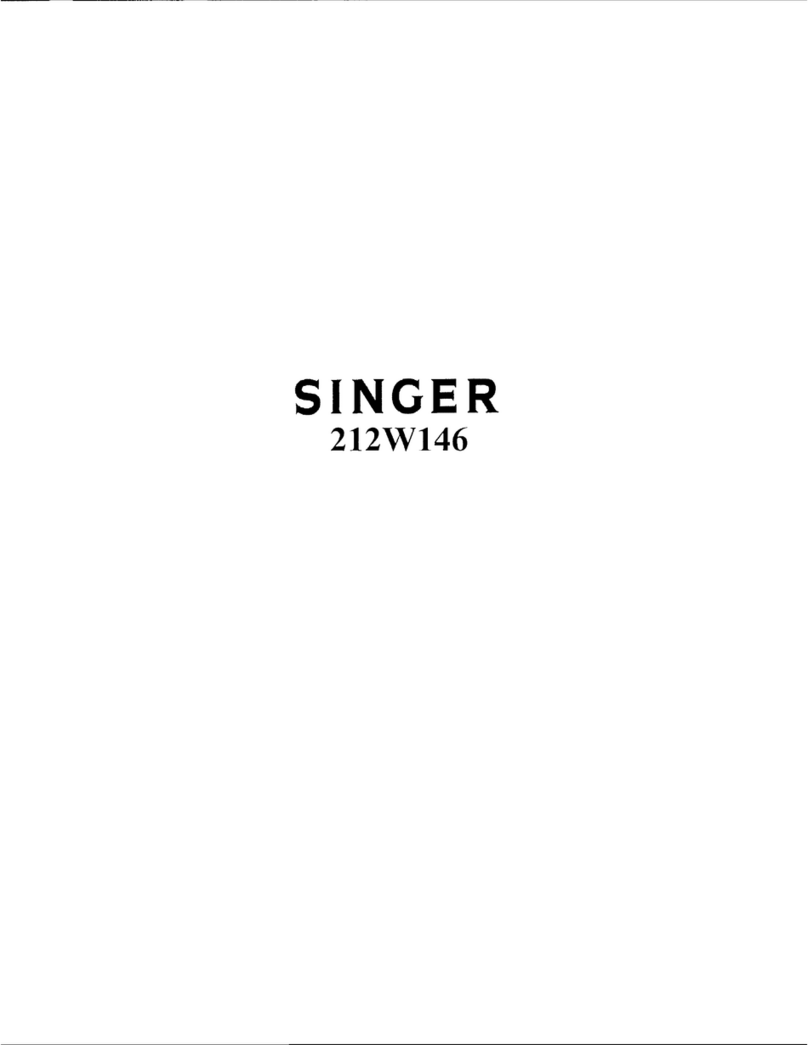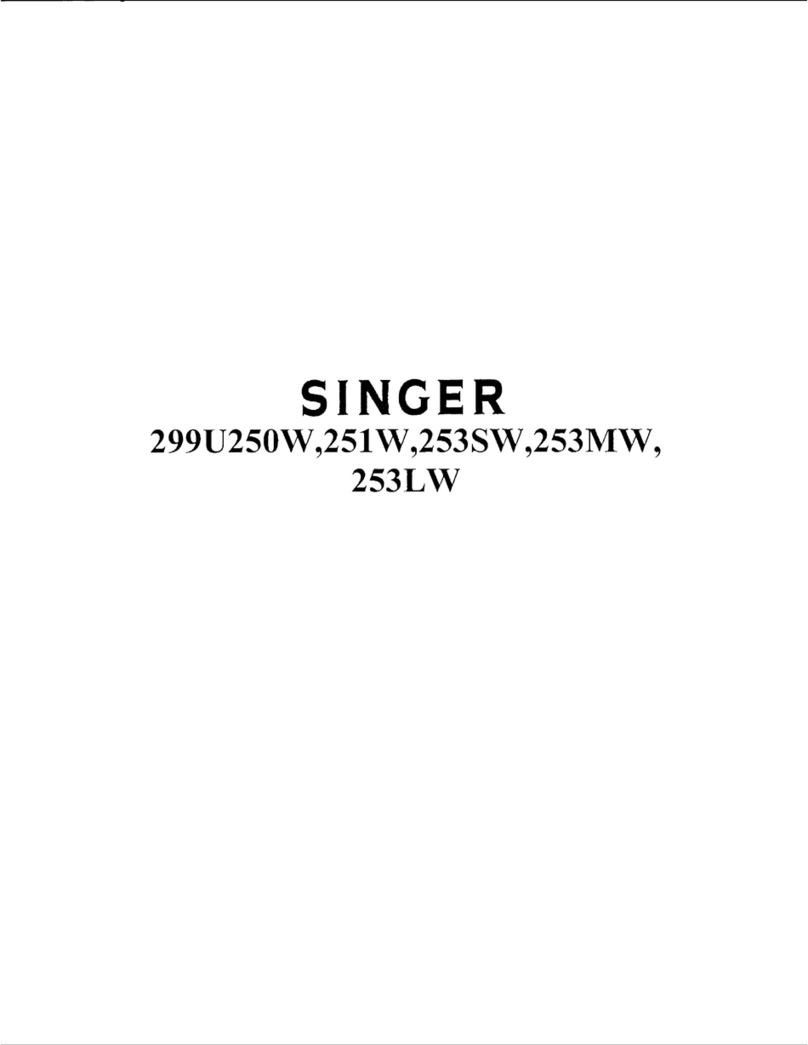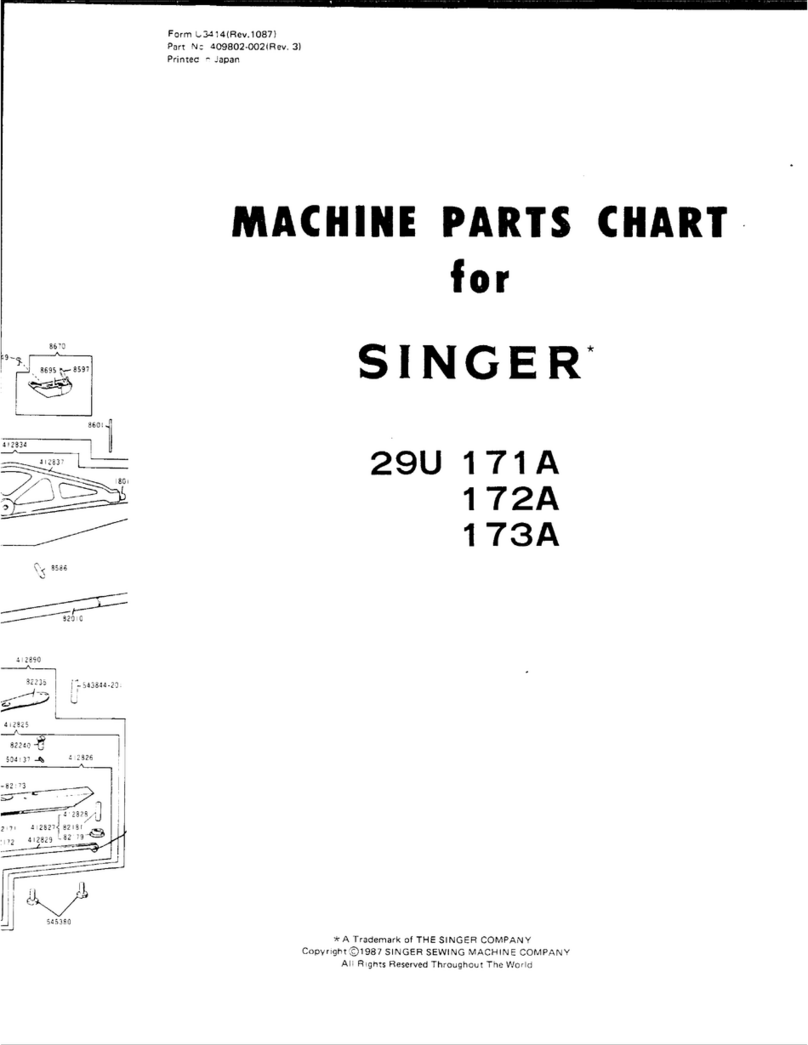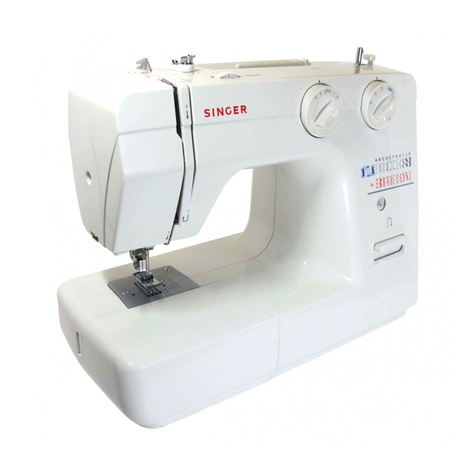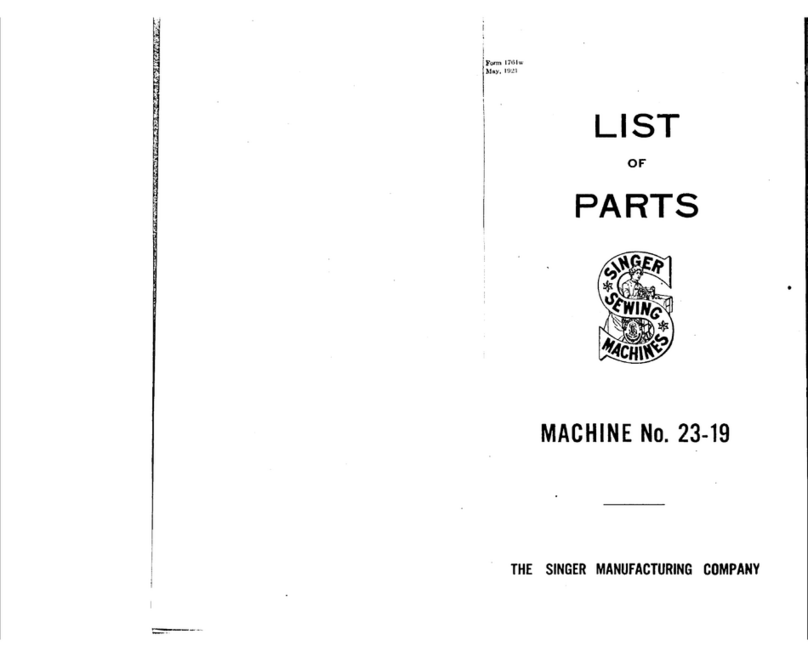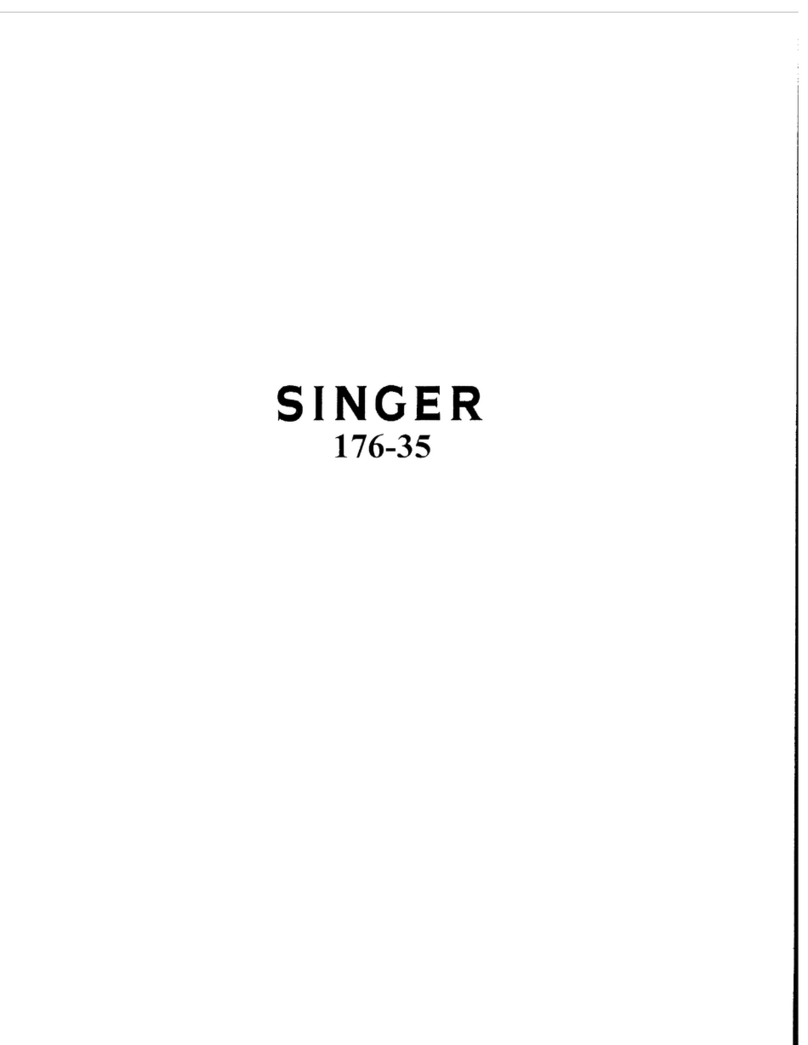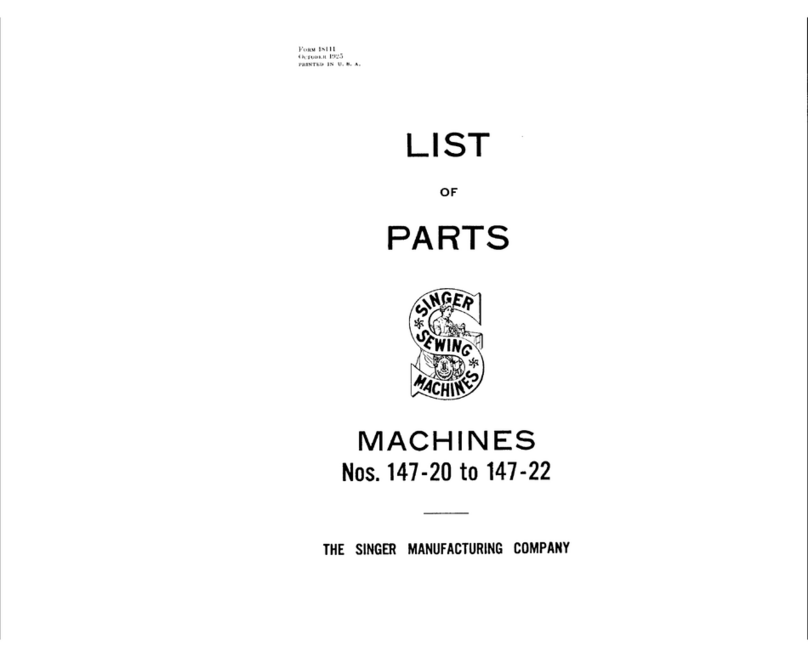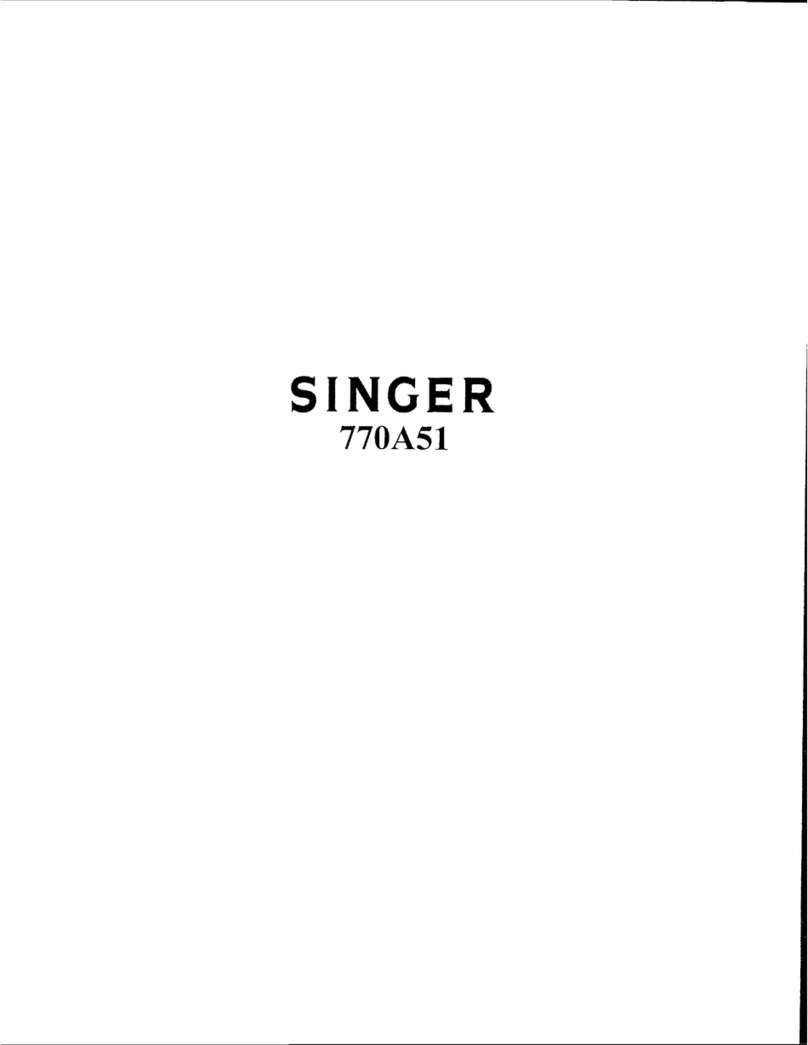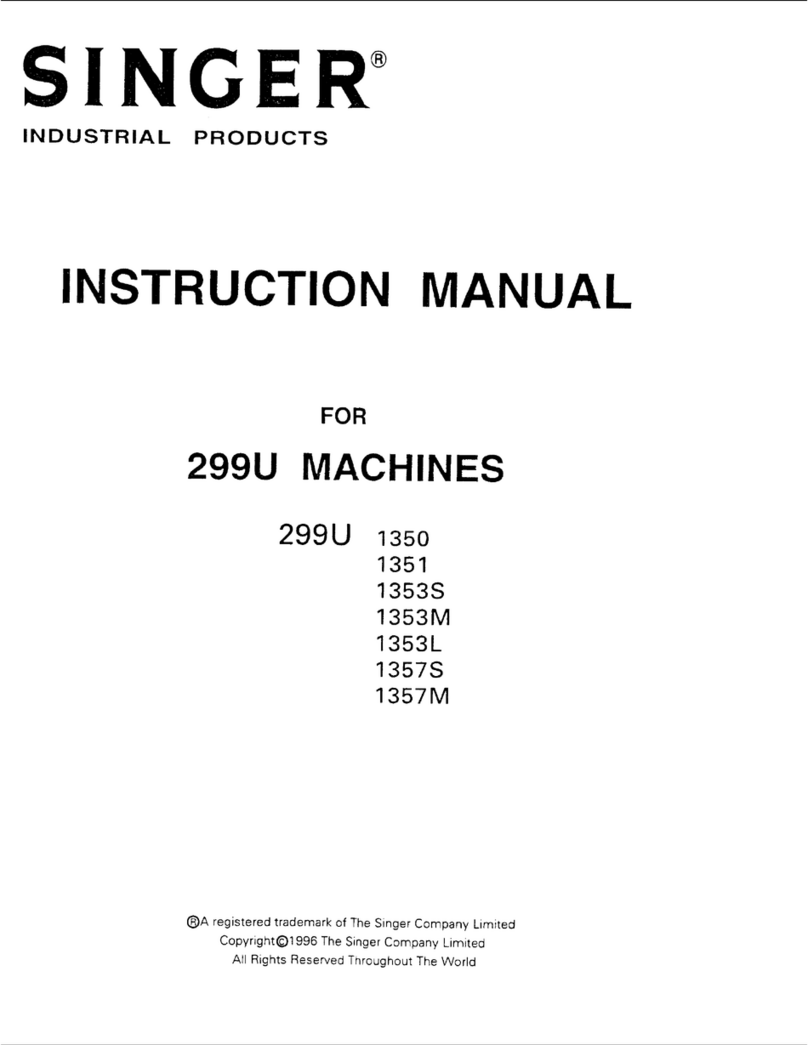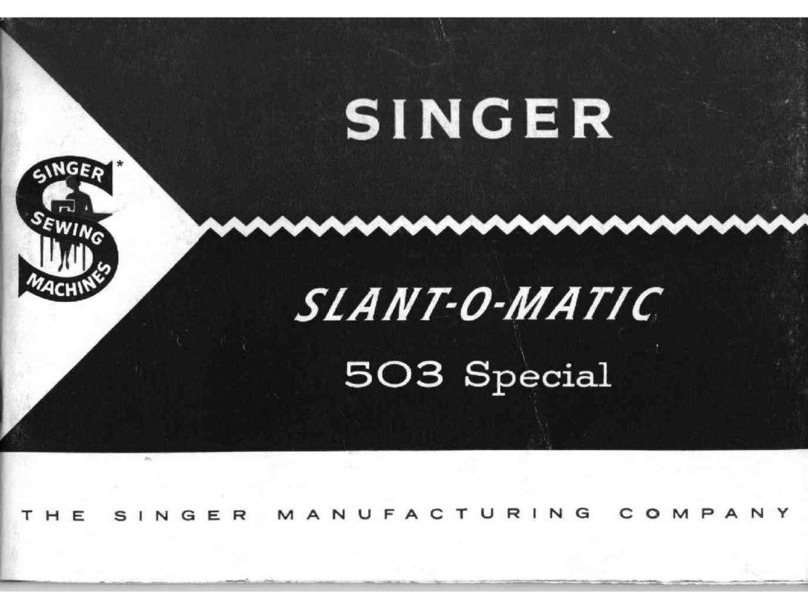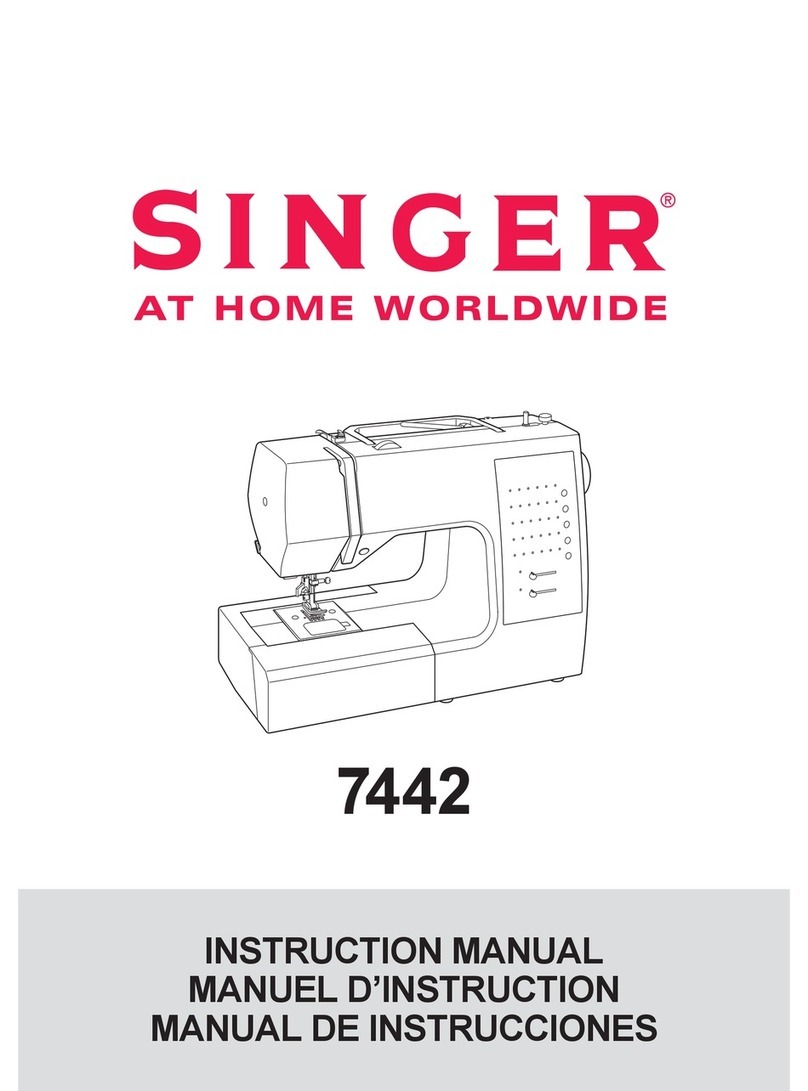
From the library of Superior Sewing Machine & Supply LLC - www.supsew.com
6
ADJUSTMENT OF ROTATING
HOOK
OIL FLOW REGULATOR
The
sewing
hook
is
automatically
lubricated.
The flow
of
oil
rs
controlled
by
the
oil
flow
regulator
illustrated
below.
1
-----·
143350
"~.,,
I
, . :
"'
:
...
-~,;
_-1=-
-b~:::::~
- -
~~'\---=
E2;!4//
~
140551
Fig. 5. Oil Flow
Regulator
in Hook
Shaft
Bushing
The oil
flow
regulator
is
set
at
the
factory
for
automatic
lubrica-
tion
of
the
hook
under
average
sewing
conditions.
If
more
or
less oil
is
desired,
turn
the
adjusting
thumb
screw
140551,
Fig. 5, clockwise to
increase
the
flow
of
oil
to
the
hook,
as
indicated
by
the
(+)
sign
under
its
arrow
on
the
head
of
the
thumb
screw,
or
turn
it
counter-
clockwise to decrease
the
flow,
as
indicated
by
the
(-)
sign
under
its
arrow
on
the
head
of
the
thumb
screw
140551.
To
determine
whether
the
oil
is
properly
flowing
to
the
hook,
withdraw
the
bed
slide
and
hold
a
piece
of
thin
paper
under
the
hook
while
the
machine
runs
for
ten
seconds.
There
should
be
a
slight
trace
of
oil
on
the
paper.
If
there
is
not,
adjust
the
oil
flow
regulator,
as
instructed
above,
or
replace
the
oil filter
143350,
Fig. 5,
in
the
head
of
the
hook
shaft,
as
instructed
on
page
32.
HINTS FOR
PERFECT
OPERATION
When
in
operation,
the
top
of
the
machine
pulley
must
always
turn
over
toward
the
operator.
Do
not
run
the
machine
with
the
presser
foot
resting
on
the
feed
without
cloth
under
the
presser
foot.
Do
not
run
the
machine
when
both
bobbin
case
and
needle
are
threaded
unless
there
is
material
under
the
presser
foot.
Do
not
try
to
aid
the
machine
by
pulling
the
fabric
lest
you
bend
the
needle.
The
machine
feeds
the
work
without
assistance.
The
slide
over
the
bobbin
case
should
be
kept
closed
when
the
machine
is
in
operation.
If
the
sewing
hook
should
become
excessively
warm,
it
may
be
due
to
an
insufficient
supply
of
oil
lo
the
hook
(see
instructions,
above,
for
adjusting
oil
flow
regulator).
NEVER
TOUCH
THE
STITCH REGULATOR PLUNGER WHILE
THE
MA-
CHINE
IS
RUNNING.
7
NEEDLES
Needles
for
Machines
of
Class
251
are
as
follows:
PRESSER
TYPE
NEEDLES
--
- - . -
----
MACHINE
BAR
OF CLASS
AND
LIFT
MATERIAL VARIETY SIZES
251-1 9
/32
inch
Light
88
X 9 8, 9, 10, 11, 12, 13,
14, 16, 17, 18, 19,
20,
21,
and 22
-
--
- - -
--
-------
-
--
------
251-2
5/16
inch
Medium-Heavy
8, 9, l 0, 11, 12, 13,
to
Light
16
X
257
14, 16, 17, 18, 19,
~-----·-
----
-
-----
-
--------------
- - -
--
20,
21,
22,
23,
and
251-3
3/8
inch
Heavy
to
Light
Regular
24
---
251-3
7/16
inch
Extra-Heavy
]6
X
261
16, 18, 19,
21,
22,
to
Light and 23
The
above
needles
are
regularly
nickel
finish
but
are
available
with
chromium
finish if
so
ordered.
The
size
of
the
needle
to
be
used
should
be
determined
by
the
size
of
the
thread
which
must
pass
freely
through
the
eye
of
the
needle.
Rough
or
uneven
thread,
or
thread
which
passes
with
difficulty
through
the
eye
of
the
needle,
will
interfere
with
the
successful
use
of
the
machine.
Orders
for
needles
must
specify
the
Quantity
required,
the
Size
number,
also
the
Class
and
Variety
numbers,
separated
by
an
x.
The
following
is
an
example
of
an
intelligible
order:
"l
00
No.
16,
88
x 9
Needles."
The
best
stitching
results
will
be
obtained
by
using
needles
sold
by
Singer
Sewing
Machine
Company.
THREAD
Left
twist
thread
should
be
used
in
the
needle.
Either
right
or
left
twist
thread
can
be
used
in
the
bobbin.
HIS END
l.21974
Fig. 6.
How
to
Determine
the Twist
To
determine
the
twist,
hold
the
thread
as
shown
above.
Roll
the
thread
over
toward
you
between
the
thumb
and
forefinger
of
the
right
hand;
if
left
twist,
the
strands
will
wind
tighter;
if
right
twist,
the
strands
will
unwind.
